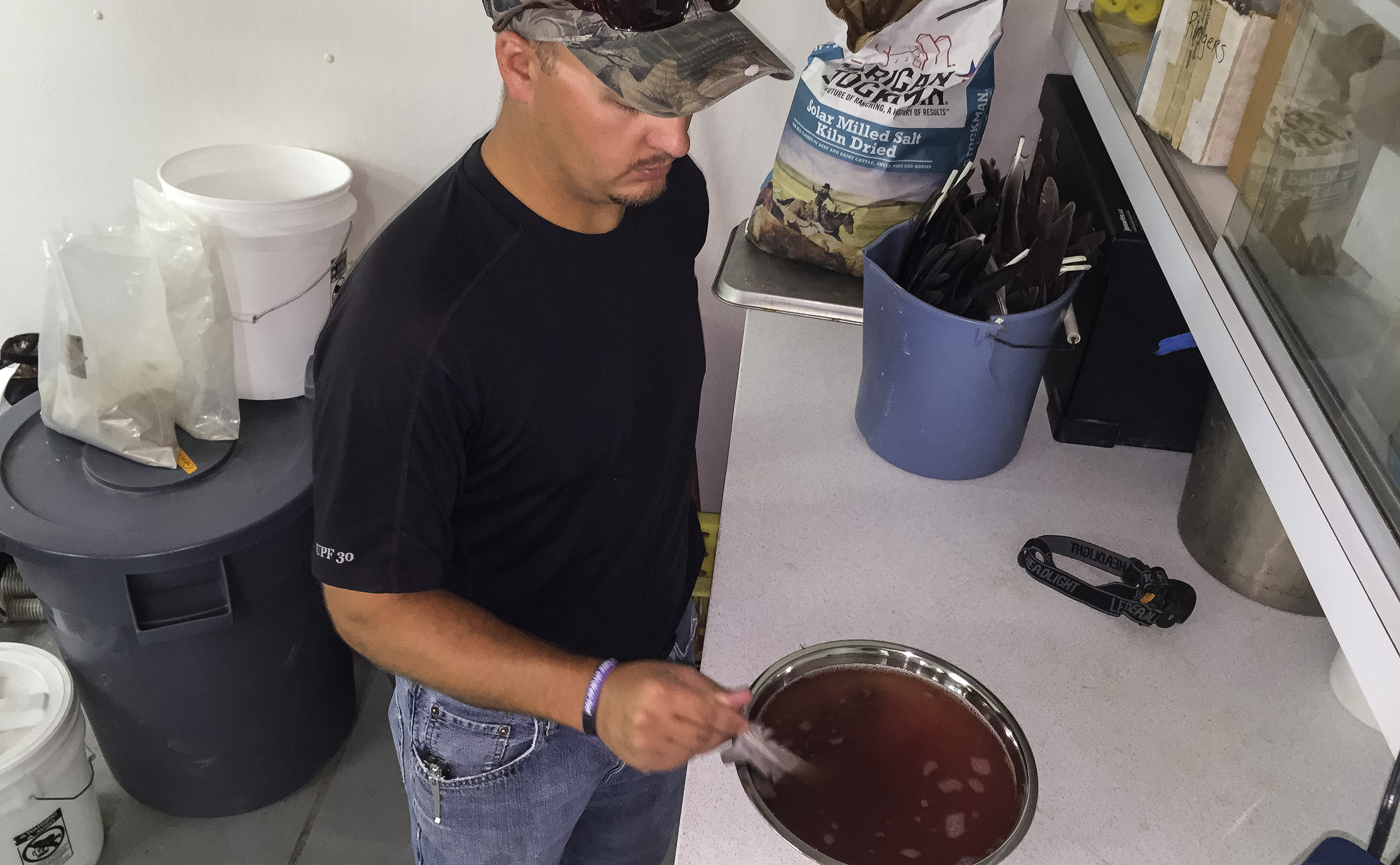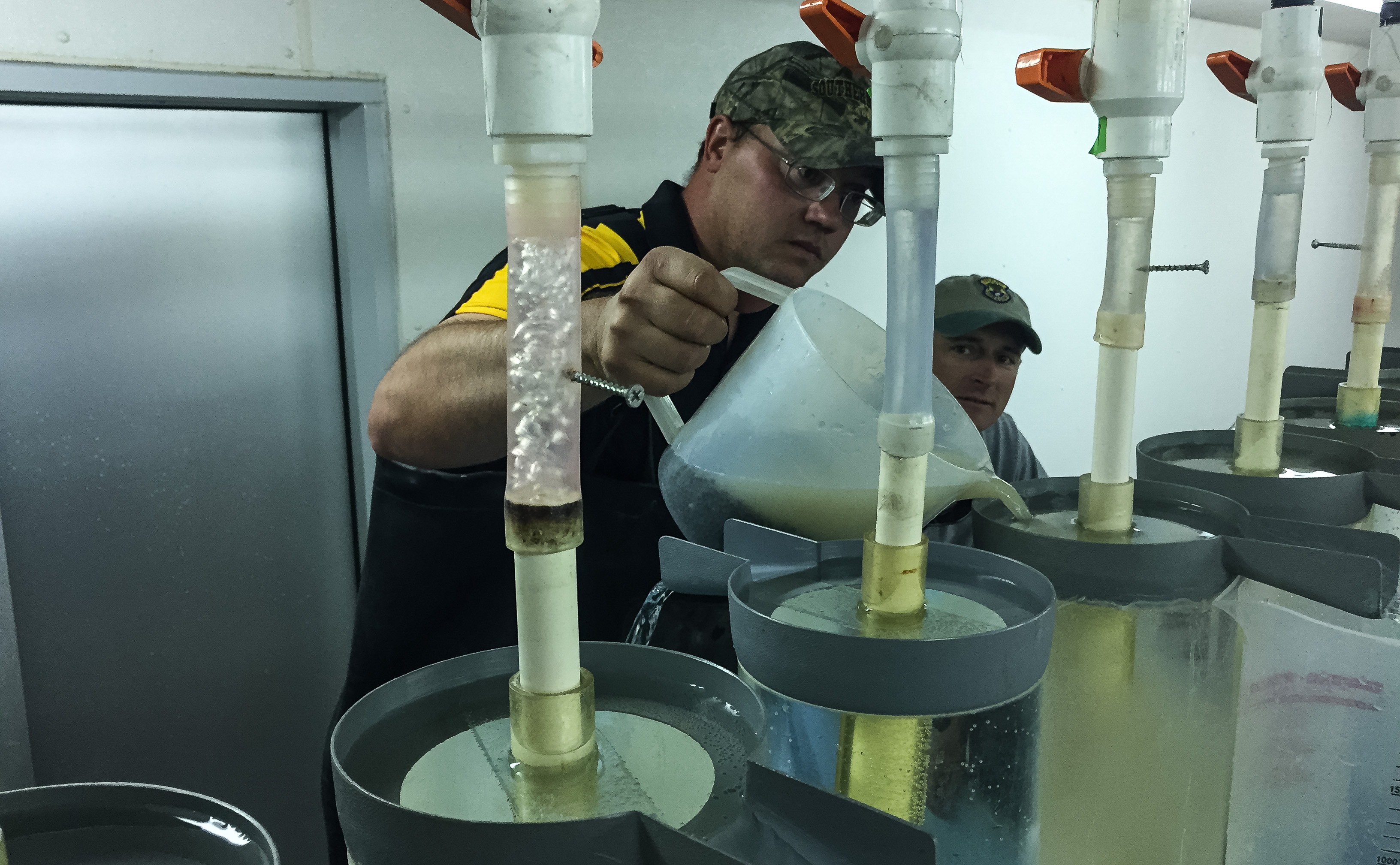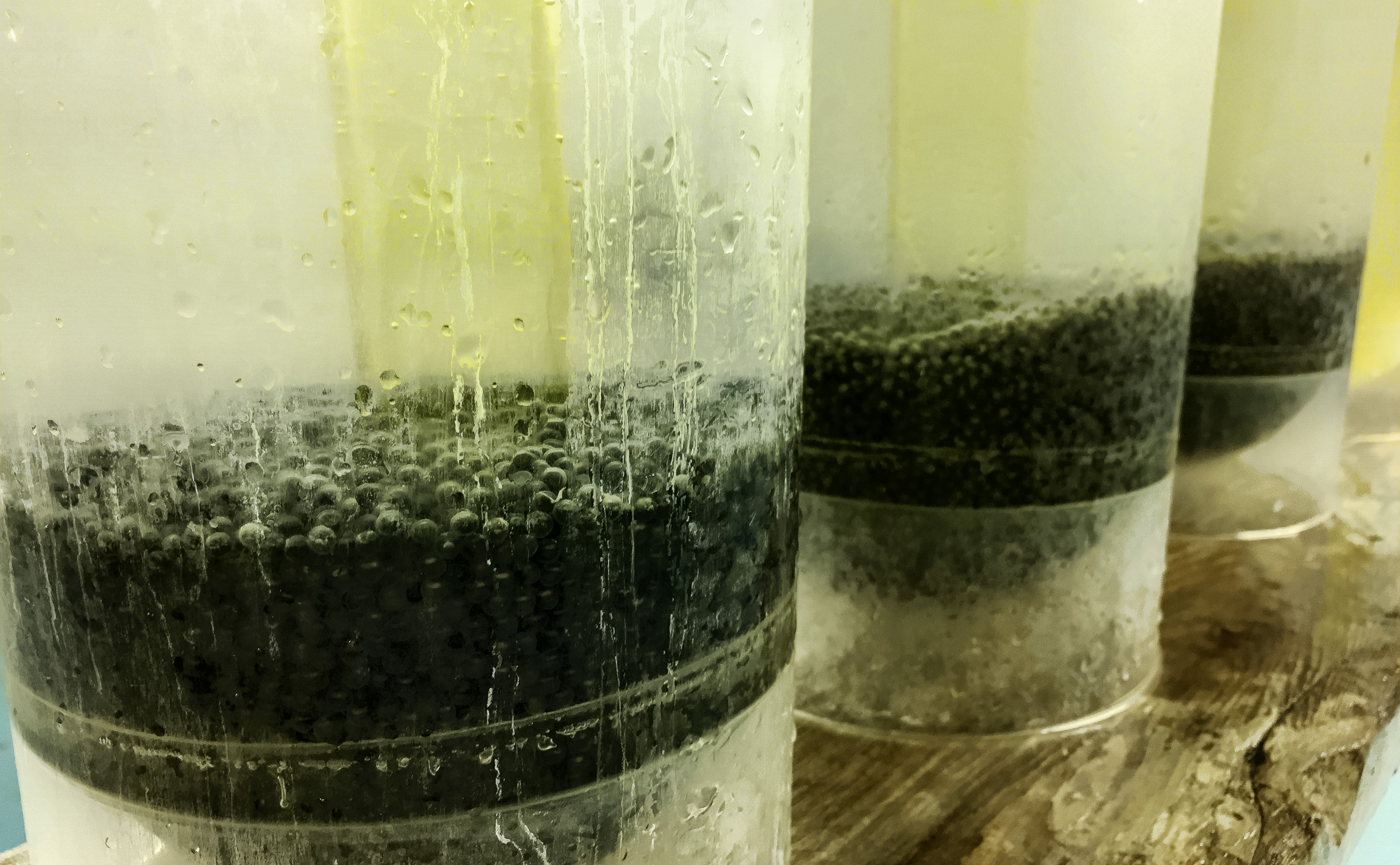
Photo: A small batch of white sturgeon eggs ready for fertilization. Eggs must be rinsed several times to remove ovarian fluid before being fertilized.
If you missed Part 4, you can catch up on it here!
After eggs are collected, they are rinsed to remove ovarian fluid. Clean eggs are then mixed with sperm collected from wild males spawned the previous day. Each bowl of eggs must be carefully stirred to fertilize as many of the eggs as possible. Careful records are kept to monitor the eggs from each spawning pair. Family groups are raised in separate containers so that biologists can track genetic diversity and egg survival.
 Photo: Idaho Power Co. biologist Jake Hughes mixes sturgeon eggs with water and milt to fertilize them. Eggs must be carefully stirred to fertilize as many as possible to produce the most offspring.
Photo: Idaho Power Co. biologist Jake Hughes mixes sturgeon eggs with water and milt to fertilize them. Eggs must be carefully stirred to fertilize as many as possible to produce the most offspring.
After fertilization, the eggs are carefully rinsed again and then transferred to a special incubating jar. Fresh water constantly flows over the eggs to provide oxygen while they incubate. Eggs will stay in the incubating jar for several weeks until hatching occurs.

Photo: CSI Hatchery Manager Matt Wilson transfers newly fertilized eggs to an upwelling incubator. Eggs will incubate here for several week before hatching.
After hatching, larval sturgeon are less than an inch long! Then they are transferred to a larger tank where feeding will begin. Each incubator might have up to 20,000 eggs at a time!

Photo: Newly fertilized sturgeon eggs incubating at CSI Hatchery near Twin Falls. Eggs from each mating pair are incubated separately track survival and genetic diversity between different families.

